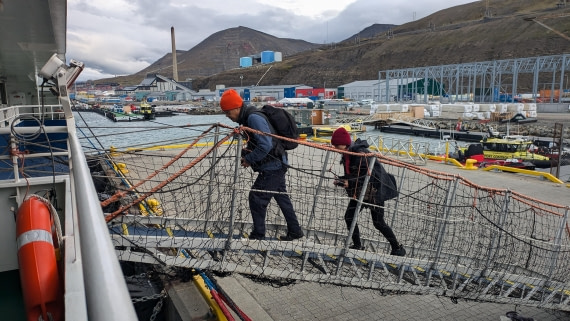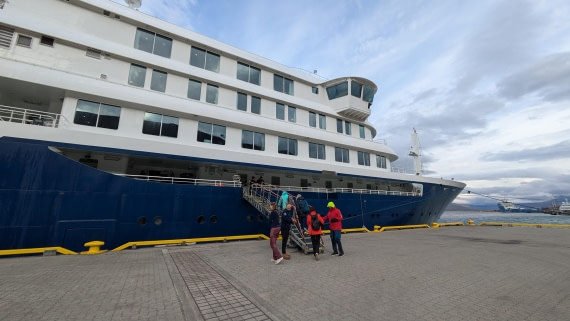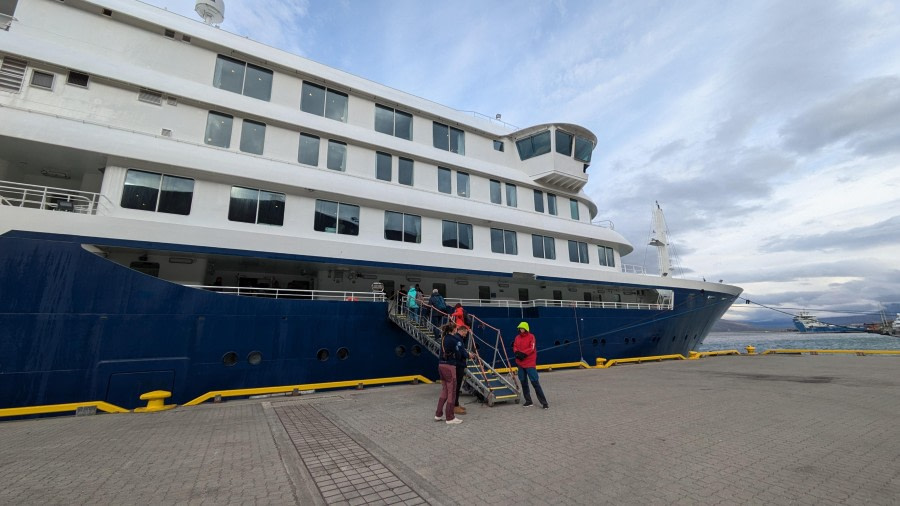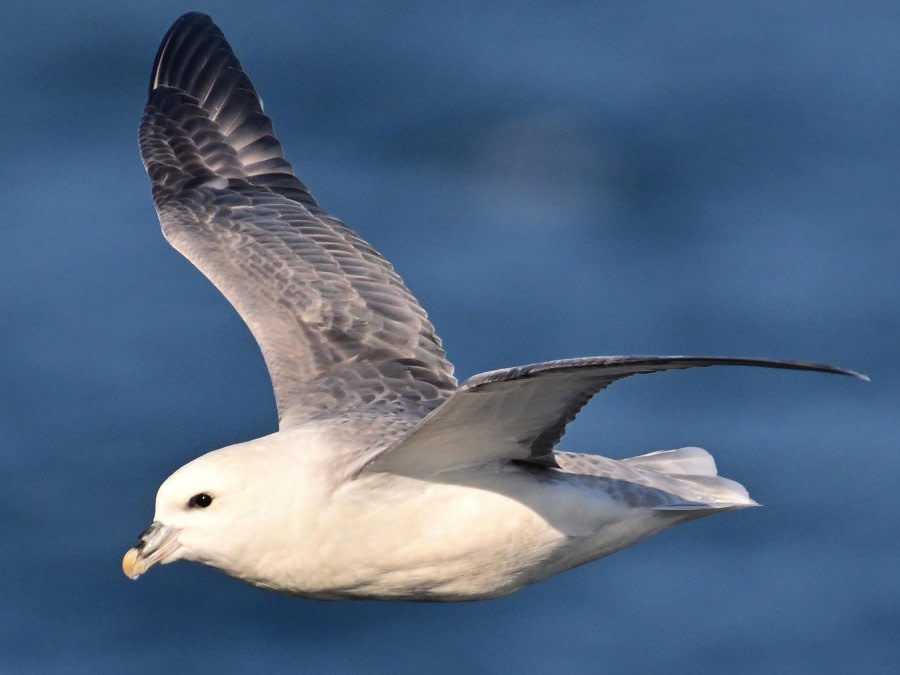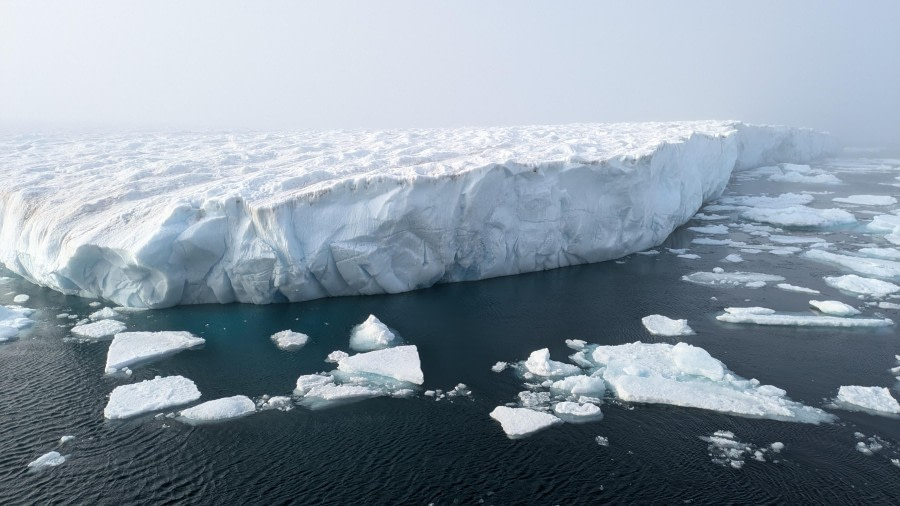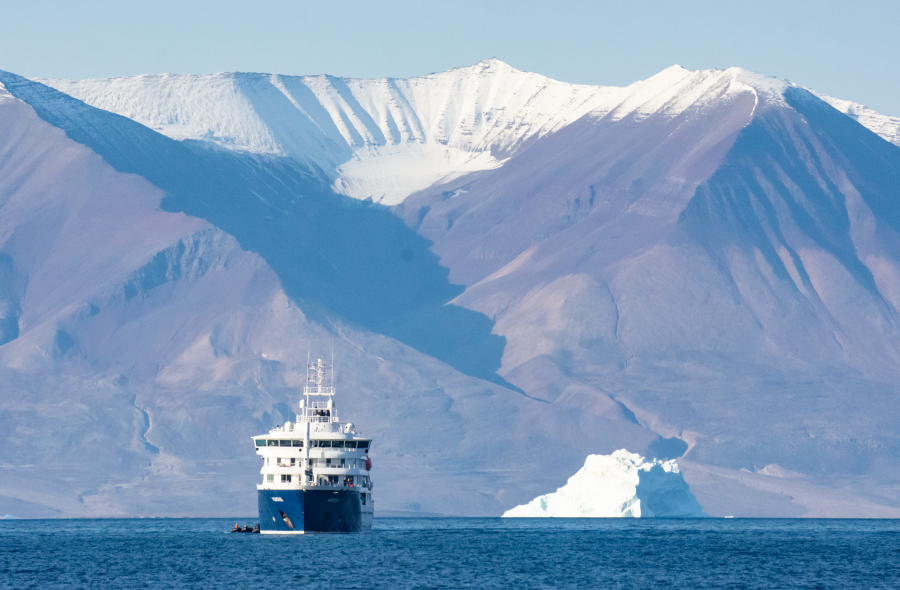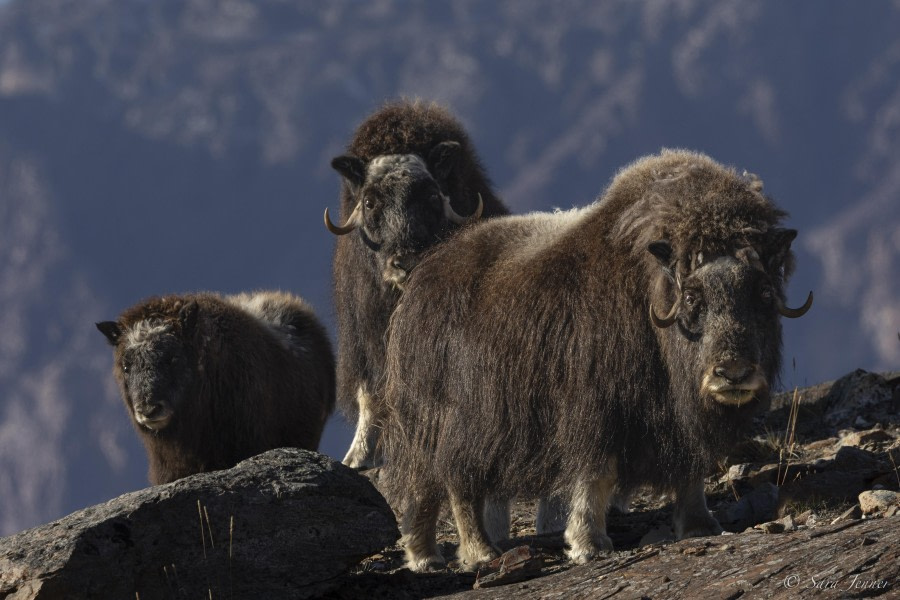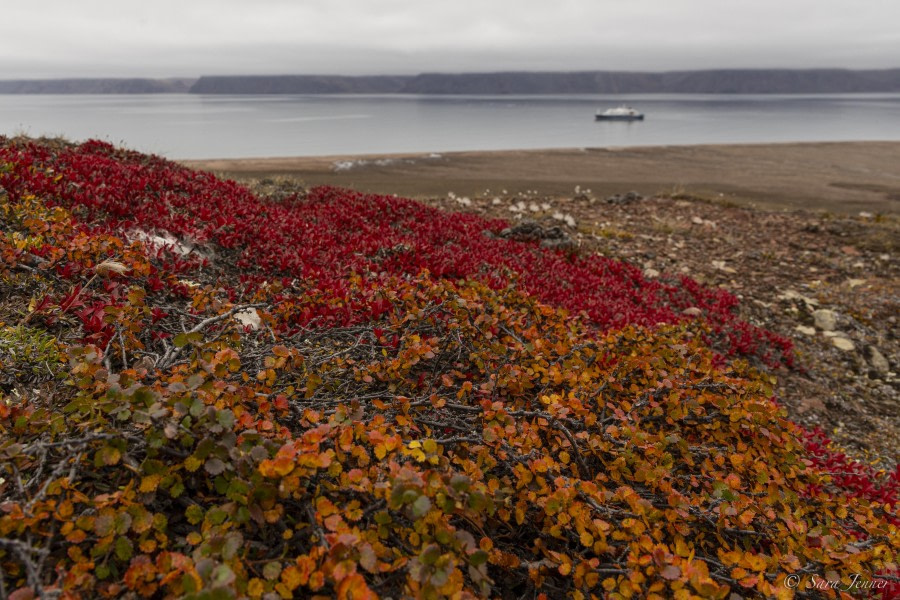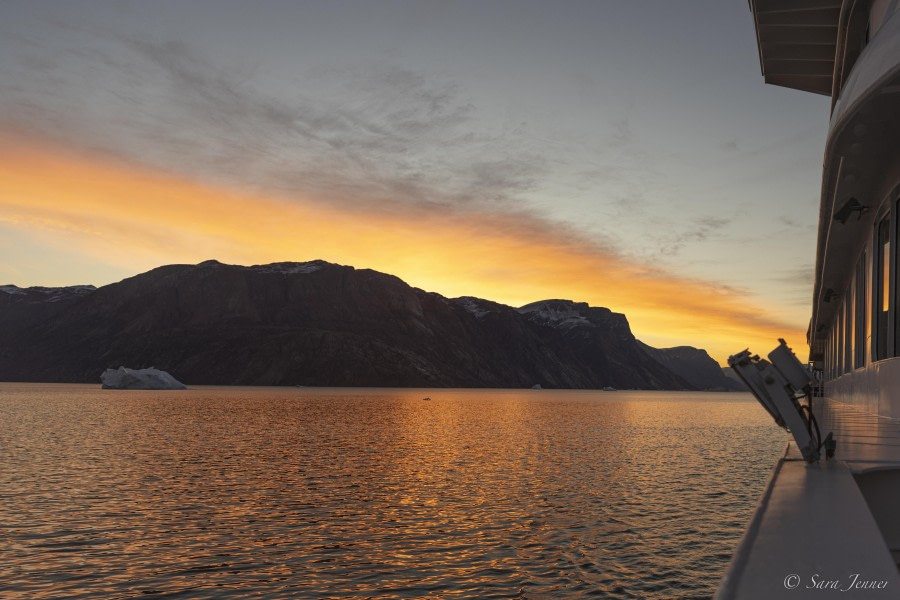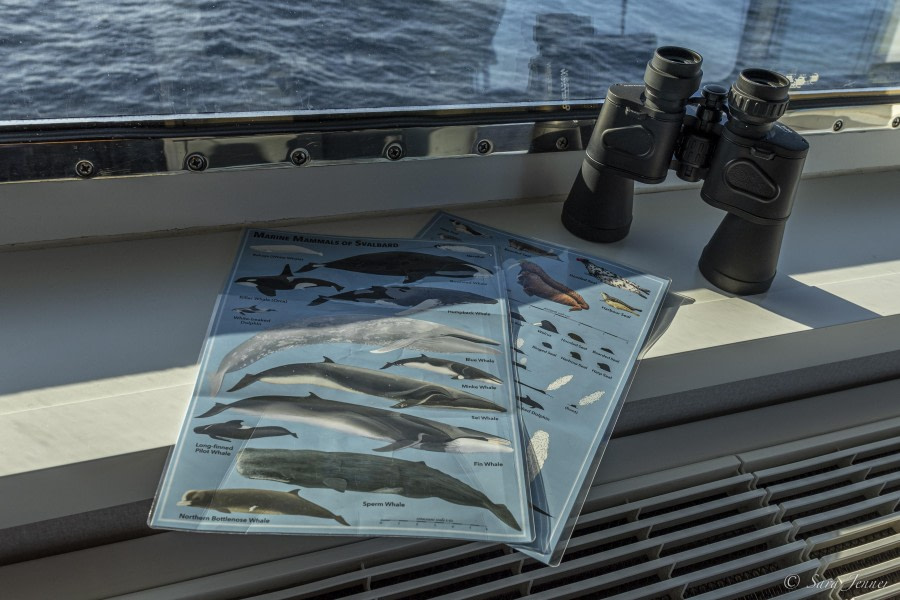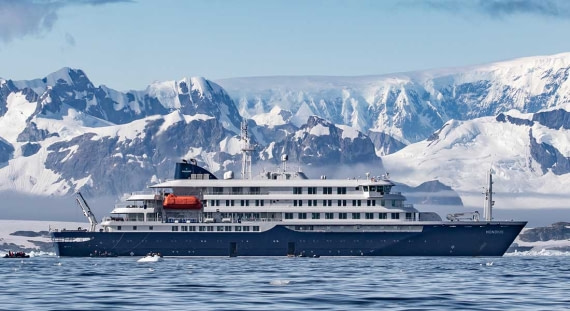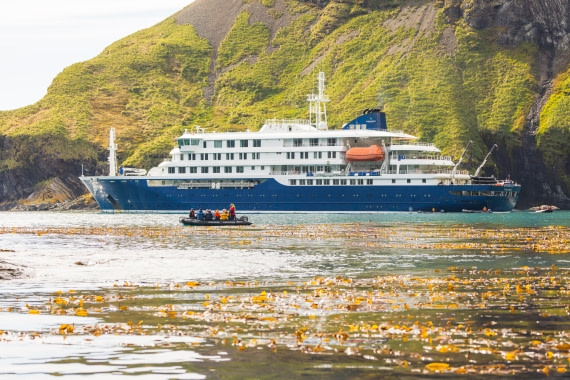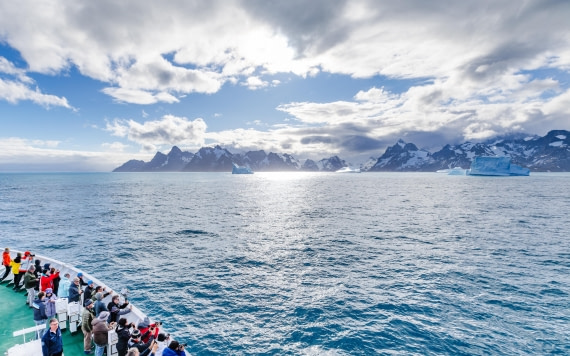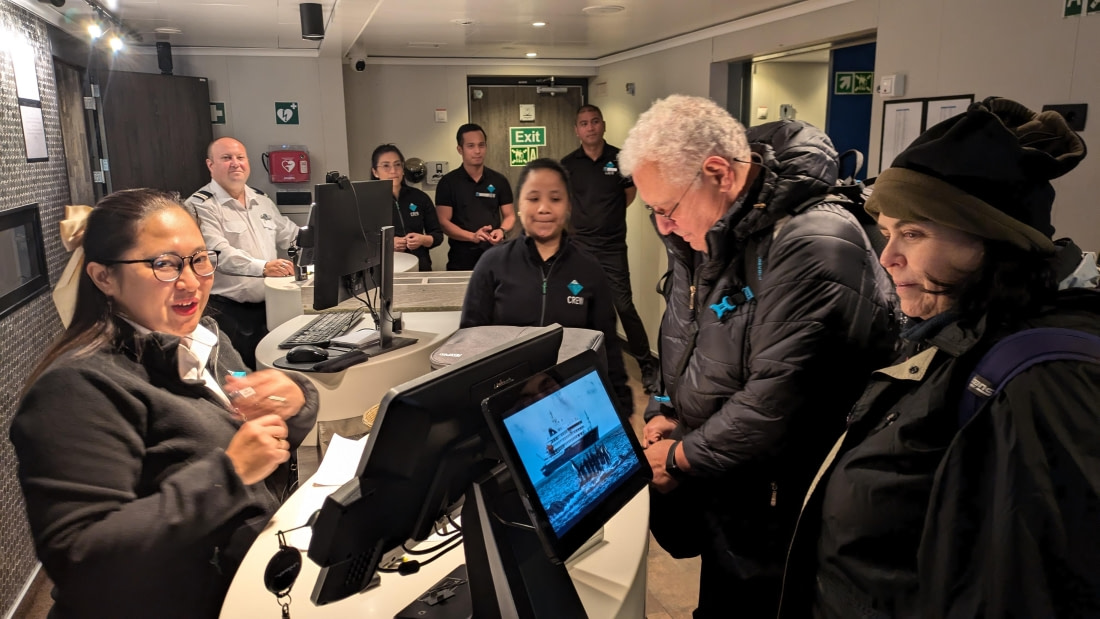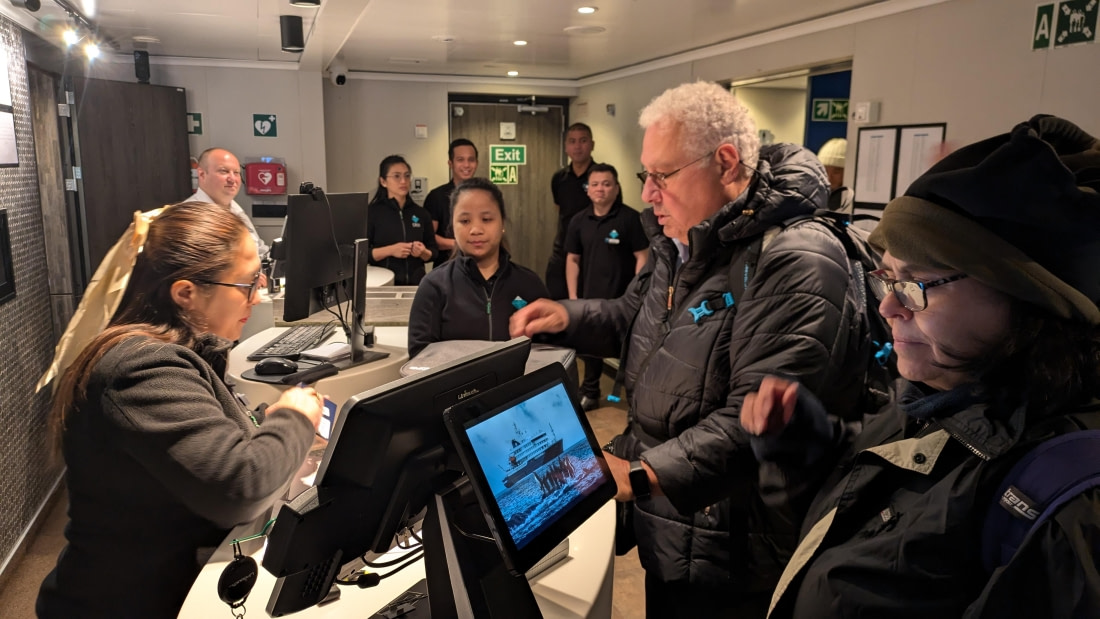| Date: |
31.08.2024 |
| Position: |
71°44.6’N, 022°56.4‘W |
| Wind: |
NE-2 |
| Weather: |
Overcast |
| Air Temperature: |
+1 |
Thread my path to Summer’s
End This bequest I leave you – she says
You will see what could be evergreen
Turn to copper and fade to gray.
We woke up in a completely different place than we had planned. That’s the nature of expedition cruises: plans sometimes have to change. Late last night, after receiving the latest weather reports, Sara, our expedition leader, made a joint decision with the captain to change the course and head to a different landing site. The reason was that the area we were initially heading to was expected to be shrouded in thick fog, with nearly zero visibility. Greenland is the land of polar bears, which is why each of our guides carries a rifle on their shoulder and a flare gun on their belt. Lack of visibility is extremely dangerous, and in such cases, our guides have no choice but to cancel the activity. However, if you know about it in advance, you can develop a new plan and make sure the morning isn’t wasted. Greenland is vast, so there’s no shortage of landing sites.
The maneuver was successful, and the plan worked! As we pulled back the curtains to let in the morning light, we could clearly see the towering mountains framing Fleming Fjord. The low clouds only obscured the mountain peaks a few hundred meters above sea level, but the lower layer of air remained clear. At times, small windows of blue sky appeared in the dense cloud cover, allowing rays of sunlight to break through and illuminate the mountain wall on the starboard side of Hondius. This made the colorful layers of rock glow in different shades – yellow, ochre, burgundy, and even hints of blue.
In the monolithic wall of the mountain range, a gap yawned like a gateway. This was destined to be our morning landing spot. Before breakfast was over, our guides loaded all the necessary gear into the Zodiacs and rushed ashore for scouting. Soon, we were given the green light. The first to go ashore were the long hikers – a small group of brave enthusiasts who would trek the longest distance across the tundra during this landing and possibly see more than the rest of us. Then the medium hikers went ashore – those who also enjoyed long walks but preferred them to be less intense, allowing time for stops and photographing the local beauty. Finally, the slow hikers landed – those who preferred a leisurely pace, carefully studying the terrain, vegetation, rock formations, and other features, trying to absorb every shade, scent, and curve of the local nature, as every experience here is unique!
We stowed our life jackets in large white bags, divided into groups according to our preferences, and set out to explore this corner of Greenland. First, we had to climb the slope slowly and conserve our energy. Then a hilly plain covered with tundra vegetation unfolded before us. To our left, a narrow canyon gaped with a river running along its bottom. Just beyond the canyon, a steep mountainside began. To the right, there was also a slope, but less steep, and consequently covered with a colourful carpet of local plants. Somewhere high up on the slope, a musk ox was grazing peacefully – a tough-looking but also quite amusing creature.
According to the calendar, today is the last day of summer. However, the biogeographical calendar of Greenland’s reality told us otherwise. The short Arctic summer here had long since ended. True autumn was upon us. All the flowers had long since bloomed, fruited, and withered, and only occasionally could we spot solitary flowers of the Arctic bellflower, Mountain Avens, and, surprisingly, even the Purple Saxifrage. The Arctic willow was shedding seeds, decorating the tundra with numerous fluffy tassels. Its leaves had turned reddish, yellow, or even brown. The leaves of the dwarf birch had also turned dark burgundy and bright yellow, and its bushes grew mainly on slopes and rarely on flat sections of the plain. The leaves of the bilberry were also dark burgundy. Here and there, we could even see some berries that hadn’t been pecked by snow buntings or nibbled by lemmings. But the most striking feature of the plant world was the bright red patches of barberry, visible from afar and densely covering the ground.
Autumn is the season for mushrooms, and Greenland is no exception. Here and there, mushroom caps of various kinds poked through – some small, some relatively large. Puffballs, resembling eggs laid by some unknown reptile, grew all around. Some were already releasing spores, and if stepped on, a greenish cloud would puff out from underfoot. Russulas, boletes, birch boletes, and many other mushrooms, whose names are known only to mycologists, dotted the landscape.
Different groups chose different routes. The long hikers disappeared into the unknown, leaving no trace. One group of medium hikers preferred to climb up the relatively gentle, tundra-covered slope of the mountain. They managed to reach a considerable height and were fortunate enough to observe the musk ox from a fairly close distance. Another group of medium hikers opted for a walk along the relatively flat terrain towards the opposite edge of the valley. There, descending to the river, they discovered an interesting hydrological phenomenon known as "naledi" (ice patches). In winter, the rivers here freeze solid, and the short polar summer is often not enough to melt this ice completely. In some places, it remains all summer, with the river simply carving a small channel through it and flowing on. It was fascinating to see this naledi.
It’s nice to walk through the tundra, but sooner or later, it’s time to return, and after a good walk, one’s appetite is quite sharp! One by one, all our groups returned to the landing site. We donned our life jackets, boarded the Zodiacs, and, full of impressions, returned to the Hondius.
While we were having lunch, the ship's bow winches hummed heavily as they hauled up the anchor. Soon, our ship set off, leaving the fjord behind for the open sea. We were in for a long journey from the Northeast Greenland National Park to the Scoresby Sund fjord system, so no shore landings or Zodiac cruises were planned for the second half of the day. As the Hondius picked up speed and moved away from the shore, the weather continued to deteriorate. It started to rain, and the wind picked up. These are the moments when the sense of coziness becomes acute. It’s so nice to sit in the warmth by the window, sipping tea, while the weather rages outside.
Chloe, our marine microbiology expert, gave us a fascinating lecture on the all-powerful plankton – the ruler of the seas and master of the waters. In the evening, we had a recap, during which Sara, our expedition leader, briefed us on the plans for the next day. The day came to an end, and with it, the calendar summer ended as well. It’s a bit sad, but there will be a new day that will bring us many new experiences, and someday, a new summer will arrive! The journey continues!




